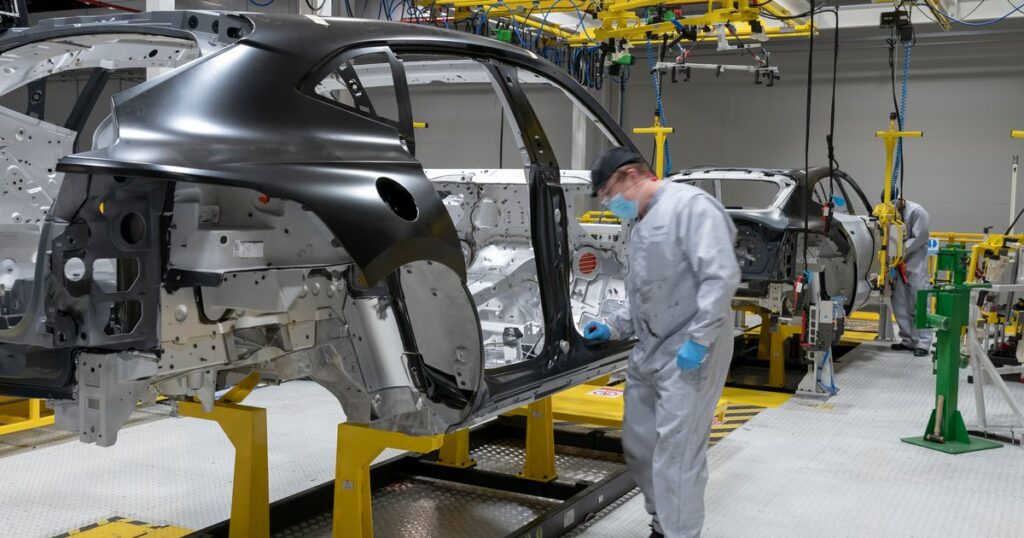The luxury carmaker has announced a significant revision to its 2024 earnings outlook due to production challenges and weak demand from China.
Aston Martin is set to produce 1,000 fewer cars than planned, with supplier disruptions and the economic slowdown in China being major contributing factors.
Supplier Disruptions and Production Challenges
Aston Martin has encountered delays in receiving car parts, resulting in a considerable reduction in its production schedule for 2024. The company stated that it would manufacture around 1,000 fewer vehicles than initially anticipated. The issues stem from various disruptions at the firm’s suppliers, which have significantly affected the timely arrival of essential components.
These supplier-related delays have compounded the firm’s problems, with the concurrent ramp-up in production following the introduction of new models exacerbating the situation. Adrian Hallmark, the new chief executive, emphasized the need to ‘take decisive action to adjust our production volumes for 2024.’
Impact of China’s Economic Slowdown
The economic slowdown in China has added to Aston Martin’s woes. The luxury car market in China has seen a decline amid a bleak economic outlook, impacting demand for high-end vehicles. This has resulted in a forecast of high single-digit percentage decreases in wholesale sales volumes for Aston Martin.
Previously, the company had anticipated high single-digit volume growth. Now, the firm must grapple with the reality of reduced demand from one of its key markets. This shift is expected to have a notable impact on the company’s overall financial performance for the year.
Financial Implications
The reduction in production and demand has significant financial implications for Aston Martin. The firm reported a pre-tax loss of £216.7 million for the first half of 2024, a stark contrast to the £142.2 million loss reported in the same period last year. The revised production and sales forecasts are expected to further influence the company’s bottom line.
In addition to these losses, the company has cautioned that underlying earnings will fall below previous forecasts for 2024. This revelation has raised concerns among investors and industry analysts about the firm’s financial stability and long-term viability.
Aston Martin is currently undergoing a multi-year turnaround effort initiated by its chairman, Lawrence Stroll. Despite these efforts, the latest developments pose significant challenges to the company’s recovery and growth strategy.
Strategic Re-alignment and Future Plans
Adrian Hallmark has outlined a strategic re-alignment to address the current challenges. The focus is on optimizing production efficiency and achieving a more balanced delivery cadence in the future. This strategic shift aims to mitigate the impact of supplier disruptions and improve operational effectiveness.
The company is exploring ways to enhance its supply chain resilience and reduce dependency on specific suppliers. This includes diversifying the supplier base and implementing more robust risk management practices. These measures are intended to prevent similar disruptions in the future and ensure a smoother production process.
The Role of New Shareholders
Lawrence Stroll has brought in new shareholders, including Saudi Arabia’s Public Investment Fund, to support Aston Martin’s financial needs. These new investments have been crucial in funding the company’s turnaround efforts and sustaining operations amid the current challenges.
Stroll remains confident in the firm’s long-term prospects, stating, ‘I remain steadfast in this view and now, with the calibre and experience Adrian Hallmark brings, I am extremely confident in the company’s ability to realise the full potential of its ultra-luxury high performance strategy.’
The involvement of high-profile investors underscores the potential seen in Aston Martin’s brand and strategy, despite the immediate difficulties. This support is vital as the company navigates through its financial and operational hurdles.
Aston Martin’s Market Position
Despite the setbacks, Aston Martin continues to hold a prominent position in the luxury car market. The effort to raise its profile through involvement in Formula One is a strategic move to enhance brand visibility and appeal.
However, the racing business is separate from the firm’s core automotive operations. The focus remains on overcoming the current production and supply chain issues to stabilize and grow the primary business.
Conclusion
Aston Martin’s revised earnings outlook for 2024 highlights the substantial challenges the company faces due to supplier disruptions and a sluggish Chinese market.
The firm’s efforts to adjust production, enhance supply chain resilience, and align with strategic goals are crucial for navigating these difficulties and securing its future success.
Aston Martin’s revised earnings outlook for 2024 highlights the substantial challenges the company faces due to supplier disruptions and a sluggish Chinese market.
The firm’s efforts to adjust production, enhance supply chain resilience, and align with strategic goals are crucial for navigating these difficulties and securing its future success.


